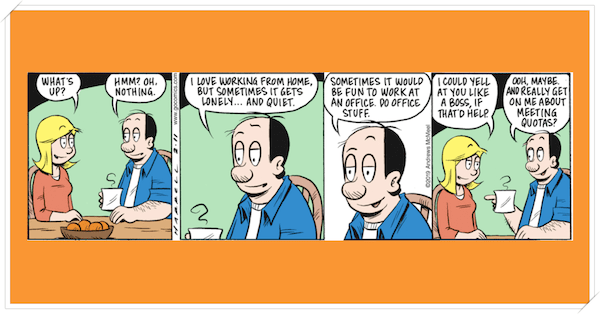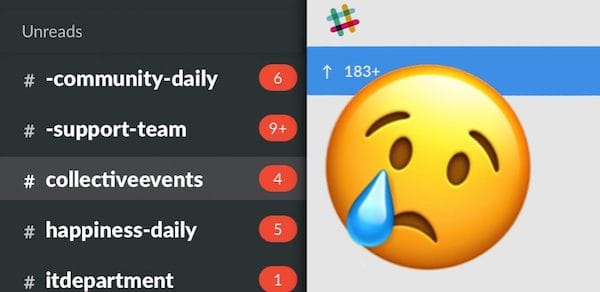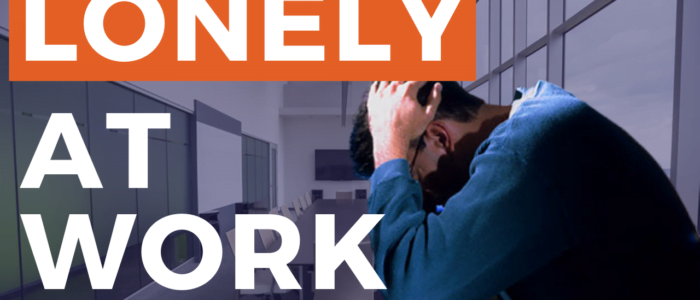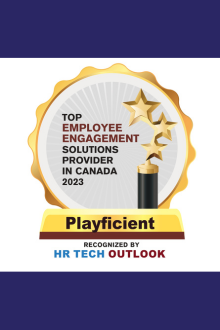Workplace Loneliness – A Guide For Management
Let’s Talking About Feeling Lonely At Work
Workplace loneliness is a sensitive subject to be sure, but one that needs to be addressed in addressing workplace culture. Those that feel lonely work need help.
Open offices haven’t help address the issue (in fact, as we will see later, it’s made it worse). While a step away from the cubicle farms, the open office has created different issues that weren’t foreseen in increasing workplace isolation. By addressing some problems, a different stack has emerged in regards to those feeling lonely at work.
Want this in video form? Here’s a video on the subject here from Playficient.
Despite the fact that we’re more connected digitally, people are still suffering from workplace loneliness. How could that be the case? What about all those fun slack chats full on interesting conversations and funny gifs? Yes, it can make things more “efficient” in the workplace, but studies have shown that these chat apps have resulted in fewer face to face interactions, increased stress, and lower productivity, flying in the face of the things that these productivity apps hopes to achieve. We end up with more people feeling lonely at work.
While the physical environment and technology that organizations use haven’t helped in reducing workplace loneliness, the number one issue still is with the culture itself for workplace isolation. In some cases, it can be intentional, but in most cases, it is unintentional in causing those to feel lonely at work.
In this post, I will cover the following on workplace loneliness (click to jump to section):
1. Stats And Information About Workplace Loneliness.
2. What Are Some Of The Major Causes Of Workplace Loneliness In The Modern Workplace?
3. What Are Some Things That Can Be Done To Deal With The Issue Of Workplace Loneliness?
1. Stats And Information About Workplace Loneliness.
“All the lonely people, where do they all come from?”
-Elanor Rigby, The Beatles.
Let’s take a look at some stats when it comes to workplace loneliness:
- Half of Americans say they regularly feel lonely while 40% say they don’t have any meaningful relationships.
- In the UK, the government has recently installed a Minister for Loneliness and is now allowing doctors to prescribe “socialization.”
- In the UK, workplace loneliness costs companies £2.5 billion a year.
- Dan recently conducted a study of 2,000 managers and employees across 10 countries and found nearly 10% said they had no workplace friends while more than half said they had 5 or fewer.
What’s interesting to note is that there is no real pattern to the cause of workplace loneliness amongst people. It can happen at any level of seniority, or to any individual(you can read more about here if you’re interested: Loneliness on the Job: Why No Employee Is an Island)

How often does this happen?
2. What Are Some Of The Major Causes Of Workplace Loneliness In The Modern Workplace?
There are three main areas that we are going to look at in regards to workplace loneliness:
The rise of the open office.
Wasn’t the open office supposed to increase collaboration and communication, while also reducing workplace isolation? That was the idea, but it doesn’t seem to be that way.
The study tracked two Fortune 500 multinational businesses as they transitioned to more open spaces. It found that employees in the “walled” space spent an average of 5.8 hours a day interacting face to face. In the “open space,” physical collaboration time withered to 1.7 hours. Instead, employees sent 56 percent more e-mails and 67 percent more instant messages that also happened to be 75 percent longer. Bernstein and Turban concluded that hyper-stimulated open offices wind up reducing, rather than increasing, productive interaction.
Interesting findings. We’ll get back to the point of sending more emails and instant messages in the technology area. Continuing from the same article:
To note, Susan Cain’s book above is featured in our list of recommended readings for corporate culture.
The Rise Of Remote Work.
It’s important to make note of the rise of remote work. While there are many great benefits to working remote (including the ability to, you know, actually get work done without distraction), it’s easy to fall into workplace isolation.
This in of itself feels is a whole different topic, which I have written about here.
If you want tips on working from home, here is a post I wrote about six work from home tips.

I will be coming back to remote workplaces in the future.
The Technology Factor – “Productivity” Group Chat.
In the last decade, we’ve seen a rise in the number of “productivity apps” that have taken place in the office. The most common one taking form in the instant messenger approach (such as Slack or Microsoft Teams being common examples).
Yet, these apps haven’t seemed to have made us more productive, and instead have created more stress at work, and have contributed to the rise to those feeling lonely at work.
We’ve seen a rise in overwork due to people feeling like they have to be constantly catching up (read our thoughts here on overwork – The Overworked Culture – Let’s Talk).
Some excerpts from the following article:
The productivity pit: how Slack is ruining work
How has that turned out?
Ironically, for some, email has now become the place for well-thought-out communications while workplace software has been inundated by thoughtless meme and emoji sharing.
Notably, the total amount of time we spend communicating is roughly the same as it was six years ago. That means the addition of workplace chat apps hasn’t actually lessened the amount of time we spend communicating.
As mentioned earlier in the movement to open offices, we’ve ended up with more instant messages and emails being sent, and less in-person collaboration, resulting in an increase in workplace isolation.
Instead of talking face to face, you end up sending an emoji or a gif.
With the rise of millennials in the workplace, the move towards more digital communication has increased. Of course, there have been plenty of articles on how millennials (my generation) is the “lonely generation”, with social media being the main culprit. These company messenger apps like Slack have taken aspects from social media. While it has lead to a great user experience and high adoption, it has also resulted in taking some of the baggage and drawbacks that comes along with social media usage which has been well documented. Adding this up, it’s a major factor in creating workplace loneliness if not kept in check.
I’ve worked at organizations where Slack was implemented fairly well.
For developers, it gave them time to do their work, instead of being bugged by sales or support walking up to them unless it was a fire. Looking back at it, there was an increase in the “worker bees side by side with headphones in sending slack messages to one another”, and in person communication did take a drop. Does that organization now have highers rates of workplace isolation than before? If it’s like many other organizations, my guess would be yes.
To be clear, I’m not saying that organizations like Slack or Basecamp who created these tools set out with the intention of creating less face to face organization. Slack’s goal was to help eliminate email, and have played a part in greatly reducing email. However, what was unforeseen were the new problems that arose as a result.

The dreaded Slack overload.
The Culture Factor In Workplace Isolation.
We’ve covered the two areas that are tangible – the technology and the physical space, that have had an impact on workplace loneliness, and ones that are easy to point towards and see where things go wrong.
The culture factor? It’s hard to put a finger on. Culture is “the spoken and unspoken values and actions of the organization” (that’s how 37signals defined it in their book Remote).
The culture of the workplace can have the largest impact on workplace loneliness.
It can come from creating a complacent environment, or that people are expected to be putting in long hours. That everyone needs to be busy at all times and are too busy catching up with things instead of collaborating, resulting in higher workplace isolation. That those unspoken rules are telling people not to question the direction of management, and can result in greater resentment and workplace loneliness.
In the last couple of decades, we have seen that shift away from the cubicles and paper memos to open spaces, email, and apps like slack. Yet, workplace loneliness has only continued to increase, and the workplace culture is ensuring that it’s not going to change. Technology and the physical space are not the only part of the equation.
3. What To Do About Workplace Loneliness.
Now that we’ve looked at the stats, and the reason for loneliness in the workplace, there are ways we can begin to tackle it.
Let’s start with the physical space.
Are you kicking it old school with the cubicle farms, or are you open space drone factory where people are side by side with their headphones in all on slack?
Consider Activity-Based Working Spaces
One type of office design that has begun to seen higher adaptation is the Activity Based Working Office design.
In an agile office setting, workers don’t have an assigned desk, but instead choose where they want to work each day. Not only do agile environments greatly reduce real estate costs by maximizing space utilization and reducing footprint, but employees get to choose the space that’s best suited to their work.
That’s where the ABW plan is most beneficial. Someone who needs to make confidential phone calls can choose a private “phone booth.” A team brainstorming session can take place in a comfortable lounge that encourages creative thinking. Someone writing a legal brief can choose a small quiet space for thinking and concentration.
Why ABW is a Better Alternative to Open Office Design
To be fair, like anything, there are pros and cons to the setup. Some people are going to (understandably) have a hard time getting away from having a consistent space. However, it looks like research has shown the impacts it can have on reducing workplace isolation, and improving the bottom line of an organization.
That said, the results speak for themselves:
Not only did ANZ reduce build costs by 30%, the move increased team engagement and even improved work performance. Decision making speed went from 4 days to 4 hours, and a new banking app was completed 6 months ahead of schedule.
Yes, this does require a revamp, but if you are realizing that the physical space of your workplace is contributing to workplace loneliness, spending time and money to address it will pay off in the long run.
Setting Boundaries On Slack And Productivity Apps.
One of the best things that you can do is setting expectations when it comes to email or “productivity” apps like Slack.
37Signals have a system in place of how group chat should be used. Setting limits to them can help set expectations. After all, they did launch Campfire, one of the first group chat tools for businesses. As an organization that works remotely, they’ve found ways over the years to address the issues caused by group chat tools.
Some notes from their article on the subject:
Is group chat making you sweat?
That said, I still think group chat is an important tool in the communications toolbox. I just don’t think it’s the go-to tool. I think it’s the exception tool. It’s far more useful for special cases than general cases. When used appropriately, sparingly, and in the right context at the right time, it’s great. You just really have to contain it, know when not to use it, and watch behavior and mood otherwise it can take over and mess up a really good thing.
And to be fair, these problems aren’t exclusive to group chat. However, the fundamentals of group chat (many people right now, one line at a time incomplete thoughts, fear of missing out (FOMO), low barriers to participation which leads to over-participation, incessant notifications, etc) tends to amplify the unintended negative consequences. You can’t separate effect from the cause.
Treat chat like a sauna — stay a while but then get out. Find yourself staying in a room/channel too long? Think about it like a sauna or a hot tub. It feels good for a while, but it’s unhealthy to stay too long.
Set expectations that it’s OK to be unavailable. If you can turn off presence, turn it off. If you can’t, make sure people understand that it’s OK to be unavailable. That turning off chat — quitting, closing, snoozing, whatever — should be perfectly acceptable. If someone’s not available it should signal that they’re working, not taking a break.
The last point is very important. I’ve talked with people who had Slack on their phones and would check it after work. There was that unspoken expectation that they had to keep up with things even after hours.
The result? People are feeling like they’re constantly behind, resulting in more stress, and since they’re so busy catching up, they don’t have as much time as they think to collaborate with others. This, of course, leads to more loneliness in the workplace.
Am I saying that we all ditch Slack (or whatever your team uses) and go back to paper memos? Not exactly. Slack or similar apps can be very effective tool if used sparingly and in the right context. However, if expectations are not set, it can get out of hand, and you end up with situations where people are constantly catching up on their slack messages, as opposed to in-person. Find the right balance.

You better not be checking Slack at home on a weekend.
The Culture Factor On Workplace Loneliness.
Coming back to those spoken and unspoken values are going to have the largest impact in dealing with workplace loneliness at your organization.
What are some things that you can do here?
Better Onboarding.
There’s a great line from the book “The Best Place To Work”:
Entering an organization is like joining a party that has been going on without you for years.
We’ve all felt that anxiety of showing up to a party late, and knowing very few people there. Most organizations unfortunately do very little to address this anxiety, and you end up with new employees dealing with workplace isolation right off the back.
I’ve written plenty on the employee onboarding process that you can look at here:
- Ten Employee Onboarding Ideas Your Organization Can Use Right Now
- A New Employee Onboarding Guide That Actually Works
- A Guide To Employee Journey Mapping
For an additional point, I should make it clear that you need to find that balance of getting the right amount of onboarding, but without overwhelming them. You don’t want the employee onboarding process to feel like speed-dating (meeting after meeting after meeting) in the early stages of their employment. Spread it out over a period of time.
More Playful Workplaces.
This goes beyond the ping-pong table – I always encourage organizations to look at the eight play personalities and how they can be catered to in the organization. I want them to look beyond the Friday beer hours for socialization, and instead consider adding things like employee-led lunch and learns, book clubs, inter-mural sports teams, and more.
Just be careful that you don’t end up in the realm of forced fun, which is no fun (which we’ve written about here).
For more on this, I’ve written plenty on the topic here:
How To Transform YOUR Organization Through Play At Work
Autonomy and healthy disagreement in the workplace.
I’m a big proponent of having a workplace culture where
a) Employees are allowed to take risks.
b) Employees should not be afraid to disagree.
A culture with this kind of attitude will have lower isolation in the workplace. People aren’t carrying around the baggage that comes with a workplace culture that doesn’t appreciate being questioned.
For more on the subject of having healthy disagreement in the workplace, I’ve written on the subject in the past:
A Guide On How To Have Healthy Conflict At Work
Make it clear that you are addressing workplace loneliness.
It’s easy to say, but much more difficult to do. Be an ancient Roman amongst ancient Greeks and practice what you preach. By tackling everything from the use of technology, the physical space, and the cultural aspect, you should constantly be taking steps to work towards a better workplace culture and reducing workplace isolation.
Have this in your values, or even in a manifesto for your organization. What inspiration for your manifesto? I’ve written on the subject here: A Workplace Culture Manifesto.

You don’t want an office full of lone wolves.
Conclusion and Next Steps.
We’ve covered the following (click to jump back to section):
1. Stats And Information About Loneliness In The Workplace.
2. What Are Some Of The Major Causes Of Loneliness At Work In The Modern Workplace?
3. What Are Some Things That Can Be Done To Deal With The Issue Of Loneliness In The Workplace?
My goal with this post is to get you to think about workplace loneliness in a different way you had before. Whether from technology, the physical workspace, or the workplace culture, modern living has played a part in creating a higher level of workplace loneliness.
Take an audit of your organization. Speak up about it. It’s not an easy subject to discuss, but opening the door to discussion can go a long way in addressing it. Turn off Slack for a bit, and address people face to face.
It’s always going to be an ongoing battle, and I’m sure solutions will come up that will solve some problems, but create more as a result. However, working on the fundamentals will go a long way in ensuring that workplace loneliness can be addressed and reduced.
If you’re struggling to address loneliness in the workplace, we at Playficient can help you out.
We have three core offerings for organizations:
How does your organization address loneliness in the workplace? Leave a comment below.





